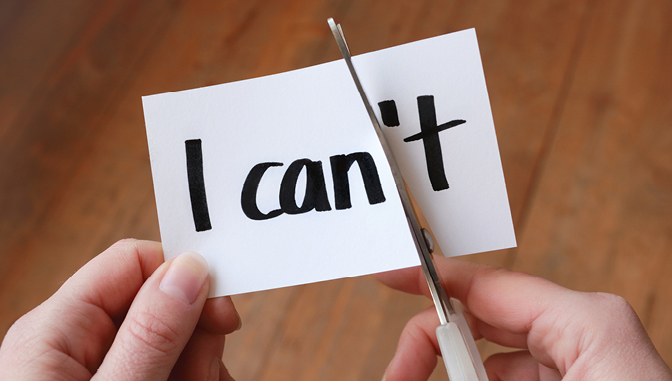One is that the term “rock bottom” is ill-defined. Your lowest point could be ending a relationship. For another, it could mean losing their job. It can mean losing everything for some people.
There are an almost infinite number of rock bottoms, and practically all of them entail loss. Losing control, friends, and family; losing one’s dignity; losing one’s health and vigor; losing one’s job or income.
You will, at the very least, waste time. You could squander years letting your life slowly fall apart if you think you have to wait until everything is at its lowest point before getting help.
It’s a common misconception that the lowest point is the only appropriate time to ask for assistance, but in reality, it’s one of the worst times. Your body and brain get hardwired to accept an addictive chemical the longer you abuse it.
Understanding the Rock Bottom
When someone claims to have “hit rock bottom,” they are referring to the lowest point of their alcoholism or addiction. This can occasionally manifest as an automobile mishap, the end of a significant relationship, or a drug overdose. Put differently, each person’s definition of rock bottom is unique.
The phrase “hitting rock bottom” is ambiguous and open to interpretation. Since addiction has no boundaries, no single incident can ever represent the lowest point of a person’s life.
When someone reaches their emotional breaking point due to an addiction, it’s referred to as rock bottom. Occasionally, this may involve going through a mental collapse.
- Financial distress due to substance abuse
- Losing relationships with loved ones due to addiction
- Experiencing an overdose
- Getting arrested for drug or alcohol use
- Getting in a car crash while under the influence
- Being completely isolated from friends and family members due to addiction
- Hurting someone while under the influence
Signs and Symptoms of Hitting Rock Bottom
having a drug or alcohol-related health problem (overdose, injury, or hospitalization)
- Arresting someone or running into legal issues losing parental rights
- Divorce or separation brought on by substance addiction
- losing one’s job Complete incompetence in terms of substance misuse
- Feeling helpless
- feeling that using medications to dull emotional anguish does not “work anymore.”
- Getting disheartened or losing one’s integrity
- feeling that one’s addiction to drugs or alcohol cannot be overcome.
Recognizing the Rock Bottom: Importance of Early Intervention
Since the term “rock bottom” is arbitrary, many people are unaware of what theirs is and are consequently unsure of whether to seek assistance. Many people reach their lowest point without realizing it, which frequently leads to overdoses or other deadly addiction-related consequences. For instance, 88,000 people died from alcohol-related causes in 2017, and 70,000 people died from overdoses. Early intervention is extremely important because it can prevent someone from falling to a depth from which they might not be able to recover.

What is early intervention?
Early intervention focuses on education and awareness about substance misuse and addiction. People who are educated about substance misuse and addiction are more likely to seek treatment, and as a result, outreach and education are important aspects of early intervention in addiction recovery. Early intervention is the bridge between prevention and addiction treatment. While late-stage and severe addictions require specialized addiction treatment in rehab facilities, most people struggling with substance misuse or addiction do not initiate their treatment journey in a dedicated addiction rehab facility.
Early interventions for substance misuse or addiction often take place in several settings, such as psychiatry clinics, schools, or primary care doctor’s offices. Mental health and medical providers may first begin early intervention services when their patients present with another condition, such as depression or diabetes. They may provide education, screening tests, brief interventions, and treatment advice as early intervention strategies.

Increasing Awareness
Early intervention strategies like education and awareness campaigns can raise public awareness about addiction, its causes, triggers, and consequences. This can be achieved through various means, such as school, social media, community centers, and conversations with healthcare professionals.
Early Detection
Early detection of substance misuse or addiction is crucial for treating the root cause and preventing progression. Awareness of signs, symptoms, and triggers can help identify unhealthy patterns and facilitate treatment.
Address the underlying problems.
Early intervention can prevent substance misuse by addressing underlying issues like stress, trauma, or mental health conditions, thereby improving treatment outcomes and preventing addiction from worsening.
Providing Treatment
Early intervention strategies ensure timely, tailored treatment for addiction, including outpatient therapy, community support groups, or inpatient rehab, recognizing the best level of care for the individual’s needs.
Reducing Stigma
Early intervention strategies like education and awareness can reduce the stigma surrounding addiction and treatment, improve access to treatment, and increase treatment success rates.
Seeking treatment and the stages of recovery
Regardless of whether you are in the early stages of your substance misuse and have sought out early interventions or if you are deep in your addiction and have hit rock bottom and have started treatment at a rehab center, you are on the right path because you have reached out for help. Just like there are stages to your addiction, there are also stages to your treatment that are divided into early, middle, and late.
Early Stages of Recovery
In the early stages of recovery, severe cognitive impairment from substance abuse can lead to rigid thinking patterns, limited problem-solving abilities, and emotional turmoil. The individual may follow treatment expectations out of fear of consequences, lacking the skills to overcome triggers or negative emotions. They may be resistant to treatment and in denial.
Middle Stages of Recovery
In the middle stages of treatment, cognitive abilities and capacity return to normal, with improved frontal lobe activity in cocaine addicts. However, the comfort of past addiction and the serious consequences of relapse remain a concern. Outpatient treatment may be less intense than inpatient care, and less supervision or support may increase the likelihood of relapse.
Late Stages of Recovery
During the late stages of recovery, individuals work towards new goals and environments free from abuse history. They may face challenges in making new relationships, starting a new job, and finding hope. As substance abuse fades, underlying issues like poor self-esteem, relationship problems, and past trauma may emerge. Healthily addressing these issues, such as talking to a therapist, is crucial to preventing relapse and avoiding compulsive behaviors.
Conclusion
Early intervention is crucial in addiction recovery, addressing substance misuse before it reaches rock bottom. Awareness and personalized care are essential, reducing stigma and providing prompt assistance. By promoting education and timely treatment, early intervention strategies can save lives and foster healthier communities.
References
- Cenikor Foundation. (2022, July 21). Why you don’t need to hit rock bottom to get help. https://www.cenikor.org/resources/why-you-dont-need-to-hit-rock-bottom-to-get-help/
- https://www.cdc.gov/nchs/pressroom/nchs_press_releases/2021/20211117.htm
- Recovery Guide. (n.d.). You don’t have to hit bottom to get help. Retrieved from https://recoveryguide.net/you-dont-have-to-hit-bottom-to-get-help/
- Fuller, K., MD. (2024, January 22). Stages of treatment and importance of early intervention. https://akuamindbody.com/stages-of-treatment-and-importance-of-early-intervention/
- Pyramid Healthcare. (n.d.). Levels of care. Retrieved from https://www.pyramid-healthcare.com/service/levels-of-care/






Unique topic, it will help many people to overcome their problems